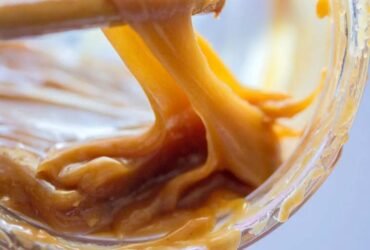Discover the ancient art of preparing Matza Bread with our traditional recipe, which will transport you to the ancient celebrations of Jewish Passover. Matzah Bread, made with matzah flour and water, is a symbol of humility and liberation in Jewish cuisine, recalling the exodus of the people of Israel from slavery in Egypt. Follow our simple steps to create this crispy, unleavened bread filled with spiritual meaning. Experience the connection to history and tradition as you bake this sacred food, perfect for sharing with the family during the Passover holiday or any special occasion. Immerse yourself in rich Jewish culinary culture with every bite of our homemade Matzo Bread!
“And there was no time to make leaven; for they were driven out of Egypt, and could not stop, nor even prepare provisions for themselves.” Exodus 12:39
This recipe was requested by @BuenTesoro
Matza bread and health benefits
Matzah bread, made with matzah flour (extra fine wheat flour) and water, is a food that offers some health benefits, although these benefits may vary depending on the additional ingredients used in the recipe. Here are some possible health benefits associated with Matzo bread:
- Low in fat and calories: Matzo bread made with matzo flour and water is naturally low in fat and calories, making it a healthier option compared to other types of breads that may contain additional fat and calories.
- No cholesterol or saturated fats: Since Matzo bread contains no animal ingredients, such as eggs or butter, it is naturally free of cholesterol and saturated fat, which can be beneficial for cardiovascular health.
- Source of complex carbohydrates: Matzah bread provides complex carbohydrates, which are an important source of energy for the body. These carbohydrates are digested slowly, which helps maintain stable blood sugar levels and provides sustained energy.
- No additives or preservatives: When made homemade with simple ingredients like matzo flour and water, matzo bread is free of artificial additives and preservatives, making it a more natural and healthier option compared to some commercial breads.
- Rich in fiber (depending on ingredients): Whether using whole wheat flour or whole matzo flour, matzo bread can be a good source of dietary fiber, which promotes digestive health and helps maintain feelings of fullness.
- Allergen free (depending on ingredients): Matzo bread made with only matzo flour and water is naturally free of common allergens such as milk, eggs, and soy, making it suitable for people with food allergies or intolerances.
It is important to note that these health benefits primarily apply to Matzah bread made with basic, simple ingredients. If other ingredients are added, such as oils, salt, or other additives, the health benefits may vary. Additionally, excessive consumption of any food, including Matzah bread, is not recommended, so it should be enjoyed in moderation within a balanced diet.

History of Matza Bread
Matzah bread, an integral part of the Jewish holiday of Passover (Pesach), has a rich and significant history dating back thousands of years. Here is a summary of its history:
Biblical Origins: The biblical account of the Exodus tells how the children of Israel escaped slavery in Egypt. According to tradition, the Israelites did not have time to let their bread dough ferment before leaving, so they made unleavened bread, or Matzah bread, which was baked quickly in the desert in the sun.
Symbolism of Freedom and Humility: Matzah bread became a powerful symbol of freedom and humility. Being devoid of yeast, which symbolizes the inflation of ego and sin, Matzah bread represents modesty and simplicity.
Kosher Regulations: Over the centuries, strict regulations regarding the production and consumption of Matzah bread have been developed to ensure that it complies with Jewish dietary laws (kashrut). This includes using specific ingredients and supervising the preparation process.
Role in the Celebration of Passover: During the Passover holiday, Matzah bread takes center stage on the ceremonial table. It is eaten in memory of the plight the Israelites found themselves in upon leaving Egypt and as a reminder of divine deliverance.
Tradition and Family: The preparation of Matzah bread has become a deep-rooted tradition in many Jewish families. Often, they gather to knead, roll out, and bake matzah bread together, thus passing on the history and meaning of Pesach to future generations.
Continuity throughout the Centuries: Despite changes in the world and Jewish life over the centuries, Matzah bread has endured as a tangible link to Jewish history and faith. Its preparation and consumption continue to be a significant and revered practice in Jewish culture today.
You may be interested: Cereal bars
Image credits: freepik










